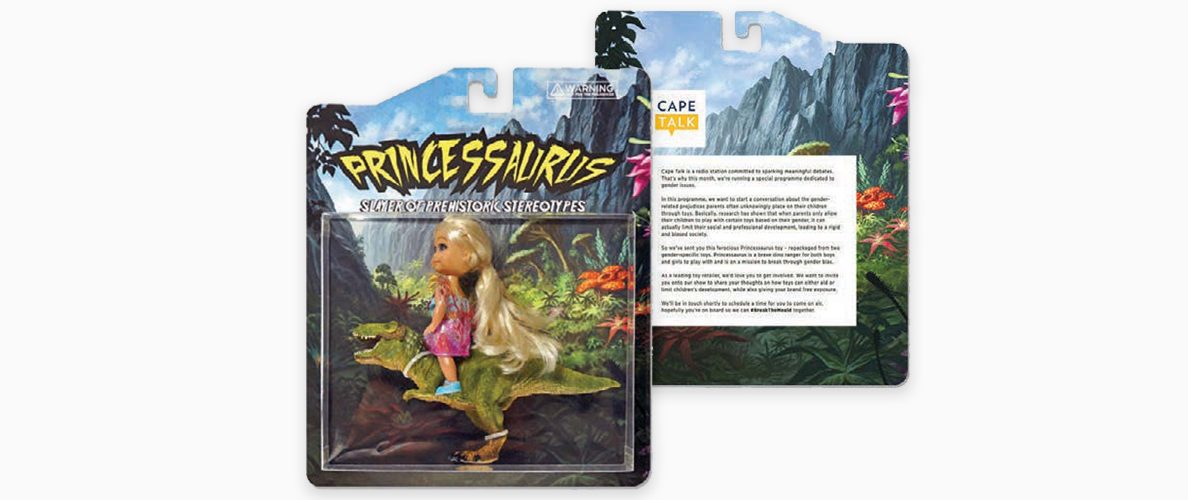Some marketers think that direct mail is a thing of the past, a forgotten relic from before the digital age. But unlike email and text messaging, direct mail can make a major impact on a recipient. By sending something tactile, that a recipient can hold, direct mail can put brands into the hands of customers.
South Africa’s Cape Talk Radio, a popular talk radio station in the Western Cape province, is known for starting meaningful debates. The station wanted to increase its commercial value and enhance its relevance. It tackled a major issue head-on to get people talking, thinking, and tuning in.
The station created an unusual direct mail campaign that aimed to expose and ridicule gender stereotypes in its community. It put the spotlight on gendered children’s toys by creatively repackaging them to appeal to any gender.
The toys were sent to leading toy retailers and a family psychologist, inviting them to the show. The direct mail sparked an on-air debate that resonated with parents and toy companies, and got them to rethink the way children’s toys are packaged, promoted and purchased.
Why it worked
This campaign was incredibly provocative, and very creative. The toys were repackaged in an unconventional way that didn’t adhere to gender stereotypes — think “ninja fairy.” This strategy was brilliant because the surprise of seeing traditional gendered toys (boy and girl toys) amalgamated made the direct mail recipients take a hard look at gender in our society and confront uncomfortable issues around it. The campaign revealed that from a young age we condition our children to behave and present themselves in certain ways through things that seem innocent, like toys. Our gendered views are imposed on impressionable minds from birth.
While toys may seem cute and innocent, giving a girl a Barbie and a boy a GI Joe makes a real impact – just like giving a toy manufacturer a gender-neutral doll made an impact in this campaign. The campaign was brilliant because it addressed a serious issue with a lighthearted tactic, putting the recipient at ease instead of on guard.
What marketers should take away from this campaign
Marketers should take note of this campaign for several reasons:
It was insightful
The campaign was thought-provoking and insightful. It worked because it gently poked fun at a serious issue that is often overlooked, making recipients feel comfortable enough to address it.
It was sent to influencers
A big mailing list isn’t always the key to a successful marketing campaign. In-the-know marketers are making waves by sending their campaigns to influencers and bloggers — in some cases bypassing the general public altogether. It’s a brilliant and cost-effective strategy because those influencers potentially become advocates, spreading the marketer’s message to a broad following that the marketer would otherwise have no hope of accessing. By targeting influential recipients like toy manufacturers and a child psychologist, the radio station was able to generate buzz and initiate a fascinating dialogue with guests who had real credibility with listeners.
It was thought-provoking and engaging
This direct mail campaign only briefly outlined the issue at hand (in a short note on the back of the packaging). Instead of shoving its message down recipients’ throats, the radio station let the recipients take what they may from the mailing. The packaging itself conveyed their bold statement.
It broke the mould
This campaign involved a redesign of something familiar. We have seen this time and time again in the case studies shared in INCITE. Reinventing something people recognize can be profoundly impactful.
Do your direct mail pieces ask or tell? Just like in a good conversation between two adults, a two-way street is often the best approach. People don’t like being preached to or bossed around, but they love to discuss and debate. Before you draft your next campaign, ask yourself this – are you talking to your customers or talking at them?
